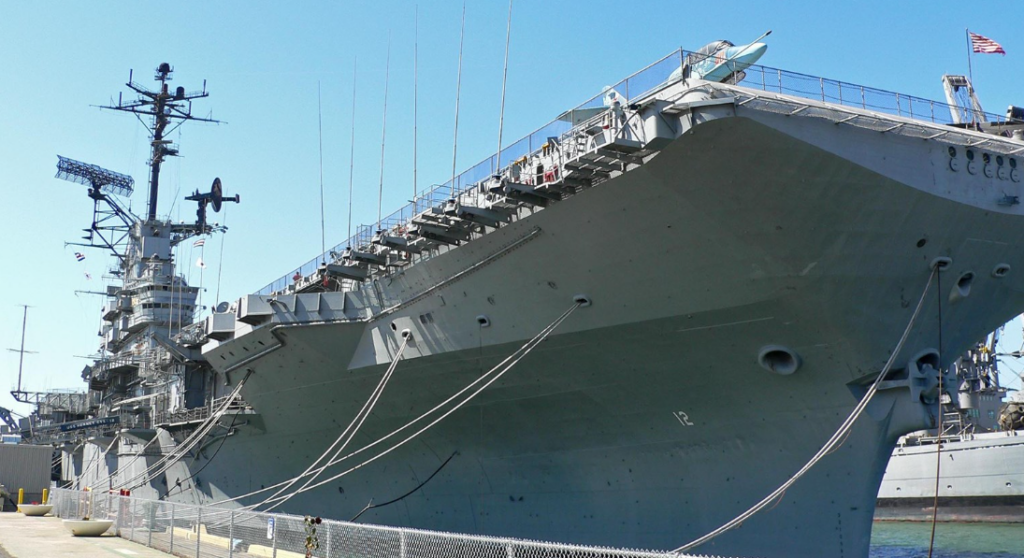As the sun rises over Alameda, California, the silhouette of a grand structure comes into view. The USS Hornet, an Essex-class aircraft carrier of the United States Navy, stands proudly as a testament to America’s robust naval history. This behemoth of steel and iron played pivotal roles in some of the most significant events of the 20th century. From its service during World War II to its involvement in the Apollo moon missions, this vessel embodies several transformative moments that continue to shape our understanding of American courage and resilience.
In recent years, this magnificent ship has embarked on a new journey as it transforms from an active military vessel into a museum dedicated to preserving and showcasing its contributions to American history. As one wanders through its vast decks filled with artifacts and historical accounts, there is an undeniable sense of camaraderie that transcends time. Visitors are not merely spectators but participants in an ongoing narrative about triumphs and trials faced by those who served aboard her.
A visit to the USS Hornet Museum is more than just a trip back in time; it’s an opportunity for immersion into stories that define national identity and foster feelings of belongingness within us all.
The Historical Significance of the Aircraft Carrier
The USS Hornet, a revered aircraft carrier, holds immense historical significance as it played pivotal roles in both World War II and the Apollo moon missions, marking indelible imprints on the annals of American history.
Launched in 1943 during the height of World War II, this Essex-class aircraft carrier was instrumental in many significant operations including the Doolittle Raid – America’s first air raid on Japan – and the Battle of Midway that turned the tide of war in favor of Allied forces.
Additionally, its contribution extends beyond warfare; it served as a primary recovery vessel for NASA’s Apollo 11 and 12 lunar missions wherein astronauts were retrieved upon splashdown.
This colossal floating fortress represented not only military might but also an embodiment of human resilience and technological prowess.
The USS Hornet’s enduring legacy is reflected most prominently at its museum located at Alameda, California where thousands flock annually to pay homage to its glorious past. It stands today as a beacon reminding all visitors of collective struggles overcome through innovation, bravery, determination, fostering within them a sense of pride and belonging.
Its rich history serves as an important educational tool for future generations – offering insights into naval warfare strategies employed during WWII and shedding light on significant milestones achieved by mankind in space exploration endeavors.
The Transformation into a Museum
Following its distinguished service in critical historical events, this iconic aircraft carrier underwent a significant transformation into a museum, providing an immersive educational experience for patrons about its pivotal role in history.
Decommissioned in 1970, the USS Hornet was destined to be scrapped before a group of dedicated veterans and supporters intervened. These individuals formed the Aircraft Carrier Hornet Foundation (ACFH), which purchased the ship and embarked on an ambitious project to transform it into a floating museum.
In 1998, their efforts culminated with the official opening of the USS Hornet Museum in Alameda, California. The museum showcases not only the ship’s illustrious naval history from World War II and Vietnam but also its unique role as a recovery vessel for Apollo moon missions.
The USS Hornet Museum is now home to a vast collection of artifacts, exhibits, and educational programs that demonstrate the carrier’s impressive legacy. Visitors have access to areas such as the flight deck, hangar deck, navigation bridge among others – offering them insights into life aboard this historic warship during peak operational periods.
A significant draw is its space exploration exhibit where one can delve into intricate details of how this formidable sea vessel played host to astronauts returning from lunar missions Apollo 11 and Apollo 12. Additionally, visitors can explore various aircraft that served on board through different eras, further strengthening their sense of connection with those who defended freedom at sea and beyond earthly confines.
This floating repository ensures that future generations remain cognizant of both maritime military prowess exhibited during turbulent times as well as groundbreaking strides made by mankind towards exploring outer space.
Fun Activities to Enjoy at Robert W. Crown Memorial State Beach


